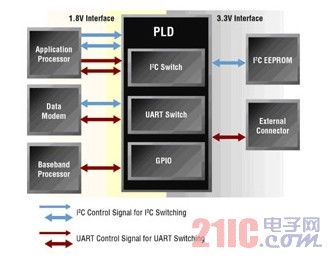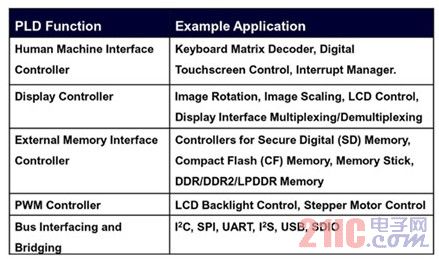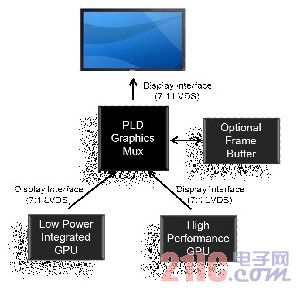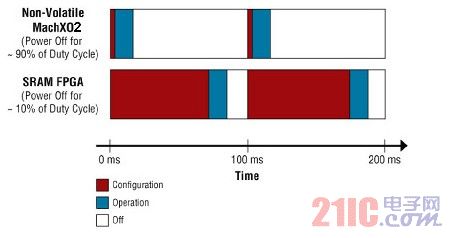In response to changing market standards in the time when limited products are available, programmable logic devices (PLDs) are widely used in consumer electronics. The development of application-specific integrated circuits (ASICs) and application-specific standard devices (ASSPs) requires expensive non-recurring engineering costs. PLDs are standard off-the-shelf devices that can be customized with flexible software tools for a variety of applications.
This article refers to the address: http://
Reduce power budget
Reducing static power has always been a challenge for consumer electronics designers. Extending battery life is one of the most important differentiating features of many battery-powered products, such as smart phones, GPS devices, mobile computing and digital cameras. As designers strive to comply with the latest ENERGY STAR and EU regulations, low power consumption is becoming increasingly important for many electronic devices powered by wall outlets.
In many consumer electronics systems, PLDs extend the current generation of application processors or CPU usage by providing advanced bus interface and bridging capabilities. These bus interface and bridging functions usually do not have very high performance requirements. Figure 1 shows an example of such an application.

Figure 1: Using PLD in a mobile phone
PLDs are also often used to implement human interface controllers, display controllers, external memory interface controllers, and PWM controllers. Table 1 shows the application of some common PLDs in the consumer electronics market.
Table 1: Functions of PLDs commonly used in consumer electronics applications

Like high-end FPGAs, low-density PLDs now have advanced I/O capabilities, including support for different I/O standards, multiple I/O banks, and multiple voltages. These features allow the use of PLDs to implement interconnect logic between ASIC/ASTS, memory, processors, and other devices that typically have mismatched voltage and I/O standards.
As shown in Figure 2, a graphics multiplexer is an ideal example for using low-cost, low-density PLDs for advanced interconnect logic. The latest trend in notebook and portable power management is the Intel Switchable Graphics Initiative. The graphics multiplexer selects a graphics controller based on the application requirements. Low-power integrated GPUs are used for routine applications such as word processing, email and internet browsing. High-performance stand-alone GPUs for high-performance applications such as gaming, video editing, and playback of high-definition video. The PLD supports low swing differential I/O standards and a built-in gearbox and PLL that interfaces with the graphics processor to implement intelligent multipath algorithms to reduce or eliminate visual effects during switching and directly drive the LCD.

Figure 2: PLD-based graphics multiplexer
Lattice's MachXO2 PLD family is ideal for a variety of functions in consumer electronics applications as described above. Combining an optimized look-up table (LUT) structure with 65nm embedded flash process technology, the MachXO2 device provides a flexible "full-featured" solution for consumer electronics design.
Low cost package
MachXO2 devices are available in a variety of low cost, halogen-free packages. Available package options include low cost BGA and TQFP, as well as advanced wafer level chip scale and micro chip scale packages. The BGA package includes as few signal wiring layers as possible to reduce the cost of the entire package. These packages are designed so that all I/O and power connections are taken from layers 2 through 4 of the PCB layout. This avoids the use of higher cost manufacturing techniques such as buried or blind holes, as well as laser hole drilling. The I/O allocation of the MachXO2 package enables density migration in the same package. This helps to utilize the same board when the design changes and requires a larger or smaller MachXO2 device.
Higher integration
Figure 3 shows a MachXO2 integrated discrete logic device such as an I/O expander, level and bus bridge converter, voltage regulator, clock source, and configuration device, all in a single device.

Figure 3: MachXO2 Functional Integration
MachXO2 devices contain up to 256Kbit of embedded flash memory. These on-chip user flash (UFM) enable MachXO2 devices to integrate external non-volatile memory for a variety of applications, including storing profile portions, storing PROM data, or as a general-purpose user flash. The MachXO2 device also features an internal oscillator with a nominal accuracy of +/- 5% that can be used as a design clock source, eliminating the need for an external oscillator.
Cured SPI, I2C, Timer/Counter
SPI and I2C controllers and timer/counters are the most commonly used functions in consumer electronics design. Designers often use PLDs to implement SPI or I2C bus extensions. Timers/counters are also often used to generate status signals. All MachXO2 devices have a cure implementation for these common features. With solidified I2C, SPI, and timer/counter functions, designers can save up to 600LUT and can be used to implement additional logic in their designs.
Non-volatile reduces power consumption
In addition to static and dynamic power consumption, the extra portion of power consumption is related to surge and configuration. This is the power consumption during power-up and configuration before the PLD/FPGA enters user mode. Power consumption is proportional to the time required to enter user mode. Board designers must consider this portion of additional power consumption while determining power requirements. Many consumer electronic systems are designed to make FPGAs or PLDs frequently cycle on/off. Due to the frequent on/off cycle, the behavior of this system exacerbates this additional power consumption. Due to its inherent nature (ie PLD with on-chip configuration memory), MachXO2 devices can configure themselves in microseconds, minimizing power consumption during surges and configuration. Figure 4 shows a comparison between the time it takes for a MachXO2 PLD to enter a user mode with an SRAM-based FPGA.

Figure 4 MachXO2 reduces power cycle
Accelerate innovation with free design tools
Designers can start designing with the MachXO2 device using Lattice Diamond v1.2 software, which is available for free download from the Lattice website.
A complete set of reference designs optimized for consumer electronics applications can be downloaded free of charge from the Lattice website. These include the LatticeMico8 microcontrollers, peripherals such as UART, I2C master/slave, SPI master/slave, I2S controller and various flash controllers. The reference design source code, including HDL and firmware, can be modified according to the requirements of the actual application.
in conclusion
In implementing consumer electronics applications, the use of programmable logic devices to implement various functions is a good choice because they overcome the limitations of ASICs and ASSPs, providing cost-effective, low-power, and flexible solutions. Designed for low-cost, low-power consumer electronics applications, the MachXO2 PLD family offers designers lower cost, lower power consumption, and increased system integration in a small package. In addition, MachXO2 includes hardened implementations of some of the most popular features commonly used in consumer electronics applications such as user flash memory (UFM), I2C, SPI, and timer/counters.
Asymmetric Thyristor is the abbreviation of thyristor, also known as silicon controlled rectifier, formerly referred to as thyristor; thyristor is PNPN four-layer semiconductor structure, it has three poles: anode, cathode and control pole; thyristor has silicon rectifier The characteristics of the parts can work under high voltage and high current conditions, and their working processes can be controlled and widely used in electronic circuits such as controlled rectifiers, AC voltage regulators, contactless electronic switches, inverters, and inverters.
Asymmetric Thyristor,60Ma Asymmetric Thyristor,Oem Asymmetric Thyristors,Electronic Component Asymmetric Thyristor
YANGZHOU POSITIONING TECH CO., LTD. , https://www.pst-thyristor.com